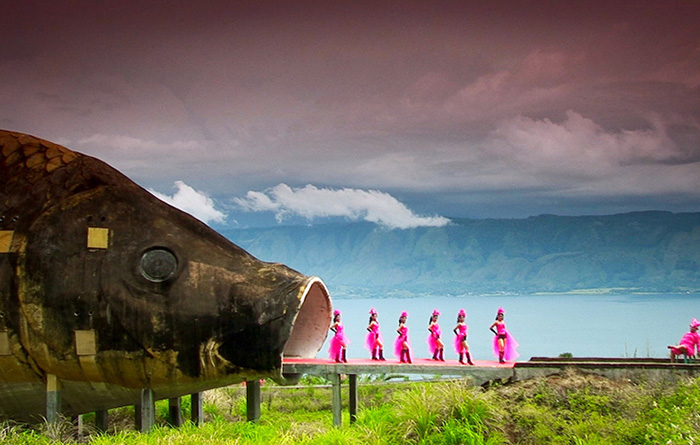
There are films that entertain, films that move, and then there are films that crack open your skull and peer into the abyss. Joshua Oppenheimer’s The Act of Killing falls squarely into the latter category. It’s not a horror film, though it will likely haunt you more than any jump scare or blood-soaked monster. It’s a documentary, a unflinching look into the Indonesian genocide of 1965-66, and a descent into the psyche of the killers themselves.
The backdrop is a young Indonesia, struggling to forge its identity after shaking off the shackles of Dutch colonialism. The political climate is a tinderbox, with Sukarno’s communist-leaning government facing increasing pressure from the military and right-wing groups. In September 1965, a failed coup attempt by the Indonesian Communist Party (PKI) ignited the flames.
What followed was a systematic and brutal massacre. Estimates place the death toll between 500,000 and 3 million, with countless others imprisoned, tortured, and displaced. The perpetrators, often paramilitary groups and vigilante mobs, acted with impunity, emboldened by the military’s tacit approval.

Enter Anwar Congo and Herman Koto, the protagonists of The Act of Killing. They weren’t mere foot soldiers; they were the faces of terror, cold-blooded executioners who reveled in their bloody deeds. Oppenheimer doesn’t shy away from portraying their horrifying acts, but what truly chills the viewer is not the graphic details, but the casualness with which they recount them.
They boast of their kill counts, recount the “techniques” they employed, and even stage theatrical reenactments of their massacres. In these macabre performances, Hollywood gangster films and Indonesian musicals become twisted tributes to their own barbarity. The line between victim and perpetrator blurs, the act of killing transformed into a grotesque spectacle.
Beyond the chilling facade, Oppenheimer’s camera probes deeper. We glimpse the cracks in the killers’ narratives, the hints of trauma and discomfort that flicker beneath their bravado. Anwar Congo’s haunted dreams, Herman Koto’s increasingly erratic behavior – these are glimpses into the abyss of their deeds, the weight of a million unmourned souls pressing down on their consciences.
The Act of Killing is not solely a film about Indonesia; it’s a stark mirror reflecting humanity’s dark potential. It forces us to confront uncomfortable truths about the fragility of peace, the ease with which fear and ideology can morph into mass atrocity. It urges us to remember the victims, not just in their numbers, but as individuals with families, dreams, and lives cruelly snuffed out.
But amidst the despair, there’s a flicker of hope. The film also gives a voice to survivors and family members, their stories reminding us of the enduring human spirit, the capacity for healing even in the face of unimaginable loss.
The Act of Killing is a film that will stay with you long after the credits roll. It’s a testament to the power of film to confront uncomfortable truths, challenge our perceptions, and ultimately, remind us of our collective responsibility to prevent such horrors from ever repeating themselves.
This expanded version provides additional context by delving into the historical events leading up to the Indonesian anti-communist purge, offering the audience a fuller understanding of the film’s backdrop and the motivations behind the actions depicted. By highlighting the personal stories of both perpetrators and victims, the article further amplifies the emotional impact of the film and underscores its enduring relevance in prompting critical reflection on human capacity for both violence and resilience.

Theodore Lee is the editor of Caveman Circus. He strives for self-improvement in all areas of his life, except his candy consumption, where he remains a champion gummy worm enthusiast. When not writing about mindfulness or living in integrity, you can find him hiding giant bags of sour patch kids under the bed.
